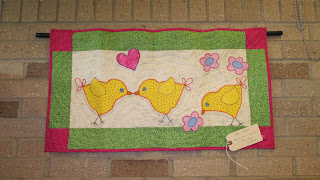We lived along Lake Michigan for seven years. Summer along the shore is lovely. The sand cliffs and beaches facing the blue lake are beautiful.
 |
| sand dunes south of Ludington, MI |
 |
| Mears State Park beach at Pentwater, MI |
Living along the lake all year round means enduring wicked winters. We had 130+ inches of snow our last year in Pentwater; 93 inches our first year in Montague was considered a light winter. The blowing wind and surf is a continual background noise.
We tried going to the beach during a storm. The sand blew into our nostrils and mouth and down to the roots of our hair. Once was enough. See a YouTube video of waves at Ludington here and videos of lake storms here and here.
 |
| Lake Michigan near Pentwater during Hurricane Sandy, early October |
 Reading Storms & Sand: The Story of Shipwrecks and the Big Sable Point Coast Guard Station by Stephen, Grace, and Joel Truman I remembered those few minutes we spent along a stormy coast and I pitied and admired the men who endured truly harsh storms.
Reading Storms & Sand: The Story of Shipwrecks and the Big Sable Point Coast Guard Station by Stephen, Grace, and Joel Truman I remembered those few minutes we spent along a stormy coast and I pitied and admired the men who endured truly harsh storms.Big Sable Point sits on a jut of land--actually sand dunes-- a two mile walk north of Ludington. Inland and behind is Hamlin Lake, a resort area. The lake was enlarged when lumber baron Charles Mears built a wood dam in 1856. His lumber mill stored the wood in the lake, which was then shunted downriver to Lake Michigan were it was loaded for shipping. When the dam broke, the life saving station men arrived to rebuild.
All along West Michigan the lumber barons cut down the old forest growth, the tall White Pines, and ships took the lumber south to build Chicago and north and through the lake to Buffalo. A hundred years ago the forests were pretty well lumbered out in the state.
But during the lumber boom the lake was teaming with ships. And with sand bars and bad weather, ice and snow, mechanical breakdowns, and captains trying for one more late season run, there was a desperate need for life saving stations along the Lake Michigan shore.
The Truman's book presents the history of the Big Sable life saving station and the men who served there with illustrative stories of their rescues. We follow the men's careers and get to know them.
Someone had to patrol the beaches day and night, in all weather. Someone had to look from the watch tower, peering into fog, rain or snow, looking for a light or flag signally distress. The men needed to bring boats to the water's edge when heavy ice and snow deeply buried the shore. In early days the men oared the boats out.
We read about distressed ships with men clinging to the mast rigging in brutal weather. For hours. In plain and subtle language, the stories reveal true heroes, men 'doing their duty' in dogged persistence, regardless of their own safety.
We learn how technology and improvements made the work quicker, but nothing could change the irresistible power of nature's fury.
The life saving stations were rolled into the Coast Guard. As ship technology changed there were fewer accidents and less need for the life saving stations and they were closed. Today the surviving stations and lighthouses have become tourist attractions, enjoyed for their scenic beauty. The Trumans have reminded us of the tragedies and triumphs of their forgotten history.
I received a free book from the author in exchange for a fair and unbiased review.
Storms & Sand: A Story of Shipwrecks and the Big Sable Point Coast Guard Station
Stephen, Grace, and Joel Truman
Pine Woods Press
$29.95
ISBN: 978-0-9854636-9-4














































